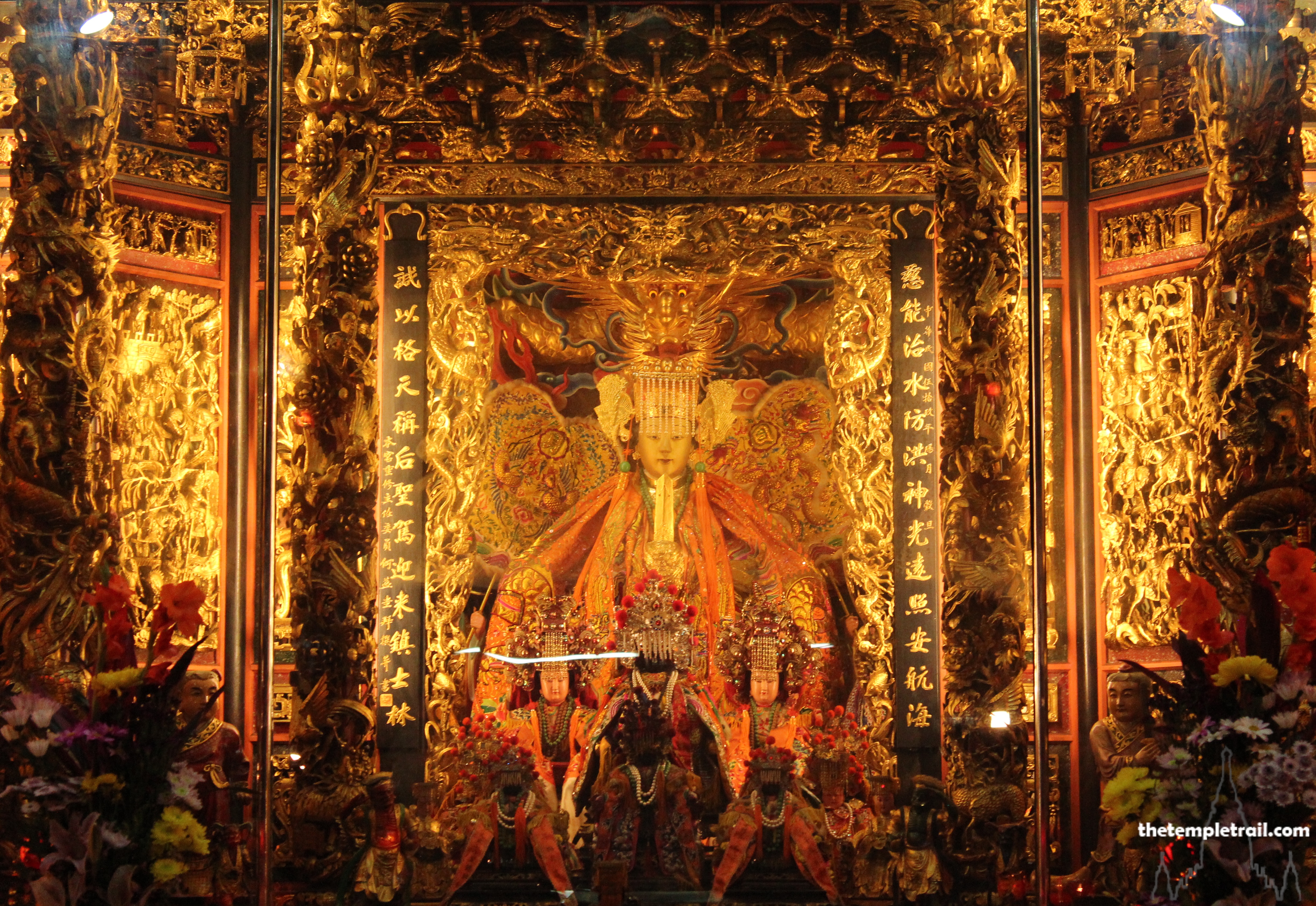The walk from the station is short, but filled with distractions. The smell of yakitori skewers emanates from a non-descript doorway. As you continue to walk up the shopping street, your nose begins to detect another aroma that draws you in. The famous local curry shop Wakakusa provides you with a delicious spinach curry that recharges you and sets you up for the adventure that lies ahead. Passing a shop that sells the distinctive Japanese jika-tabi shoes, you find yourself on the threshold of a more verdant area. The green of the curry you ate reflects the beauty of nature that is so prominent here in Nara. As your path begins to climb, you come to the outer edge of the first temple of the area. The Buddhist temple, Kōfuku-ji, is not as large as it once was, but it still has splendid buildings that captivate and awe.
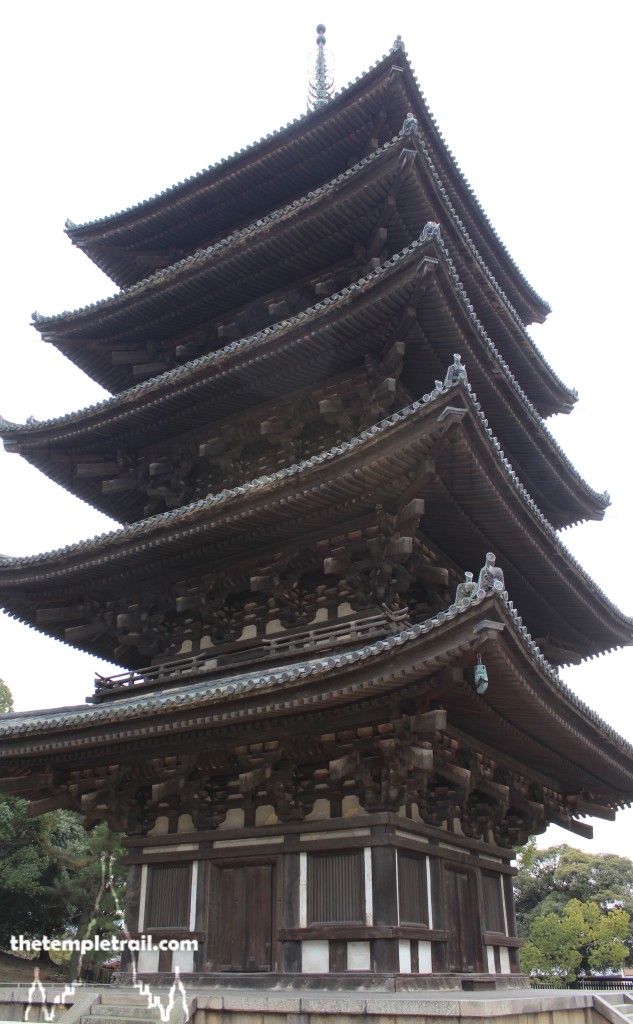
The temple has a somewhat nomadic history. It was first built in 669 AD in Yamashina (now a ward of Kyoto) by the wife of Fujiwara no Kamatari, Kagami-no-Ōkimi. The Fujiwara Clan, founded by Fujiwara no Kamatari, was a one of the most powerful families in Japanese history. The Asuka period (538 – 710 AD) politician and statesman’s clan went on to dominate politics throughout the Heian period (794 – 1185 AD) and had influence right through Japanese history until the Meiji period (1868 – 1912). His descendants almost exclusively held the roles of Sesshō (regent) and Kampaku (chief advisor) to the emperor for a thousand years. Kagami-no-Ōkimi built Kōfuku-ji (originally called Yamashina-dera) in a bid to help cure her ailing husband’s illness. The great irony is that Fujiwara no Kamatari was a staunch rival of the new introduction of Buddhism to Japan and favoured the traditional Shinto religion. Perhaps that is why the temple construction failed to heal him. He died in that year (669 AD) and shortly before his death, was granted the title of Taishōkan and the surname Fujiwara by Emperor Tenji. Kagami-no-Ōkimi enshrined a Shaka triad (statues of Śakyamuni, the historical Buddha, and two attendants) that had been decommissioned by Fujiwara no Kamatari in 645 AD when he defeated the Buddhist Soga Clan that had dominated the past fifty years through the influence of the powerful Sesshō, Prince Shōtoku Taishi.
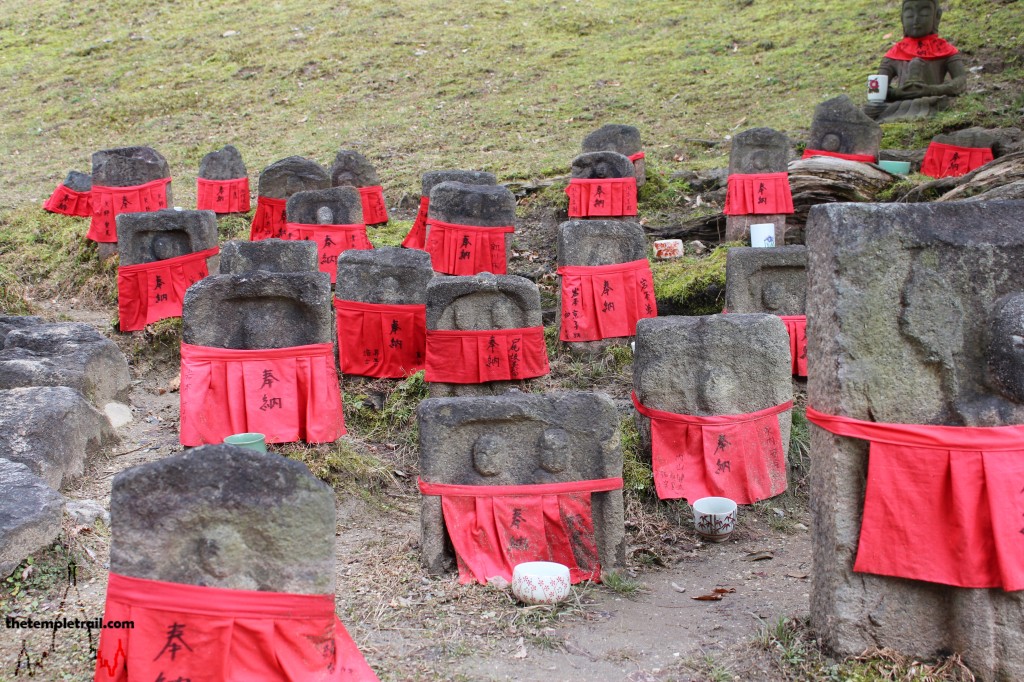
The temple was moved in 672 AD, the first year of the reign of Tenji’s younger brother, Emperor Tenmu. It was relocated to Umayasaka-no-miya (Umayasaka Palace) in Asuka and renamed Umayasaka-dera. Finally, in 710 AD, at the beginning of the Nara period (710 – 794 AD), the temple came to its current location. When the Empress Gemmei moved the capital from the short lived Fujiwara-kyō, the first temple to make the 18 kilometre journey to the new city of Heijō-kyō (Nara) was Kōfuku-ji. It made up part of the grid pattern planned new city that was modelled on the ancient Chinese city of Chang’an (Xi’an). Kōfuku-ji remained as the Fujiwara tutelary temple and was a powerful and wealthy institution. Over the years it became an important Buddhist centre and an influential political player. Even after the move of the capital to Heian-kyō (Kyoto) in 794 AD by Emperor Kanmu, the temple remained powerful. While the other six Nanto Shichi Daiji (Seven Great Temples of Nara) waned, Kōfuku-ji exercised its political power from afar until the decline in the Fujiwara hold over mainstream politics.
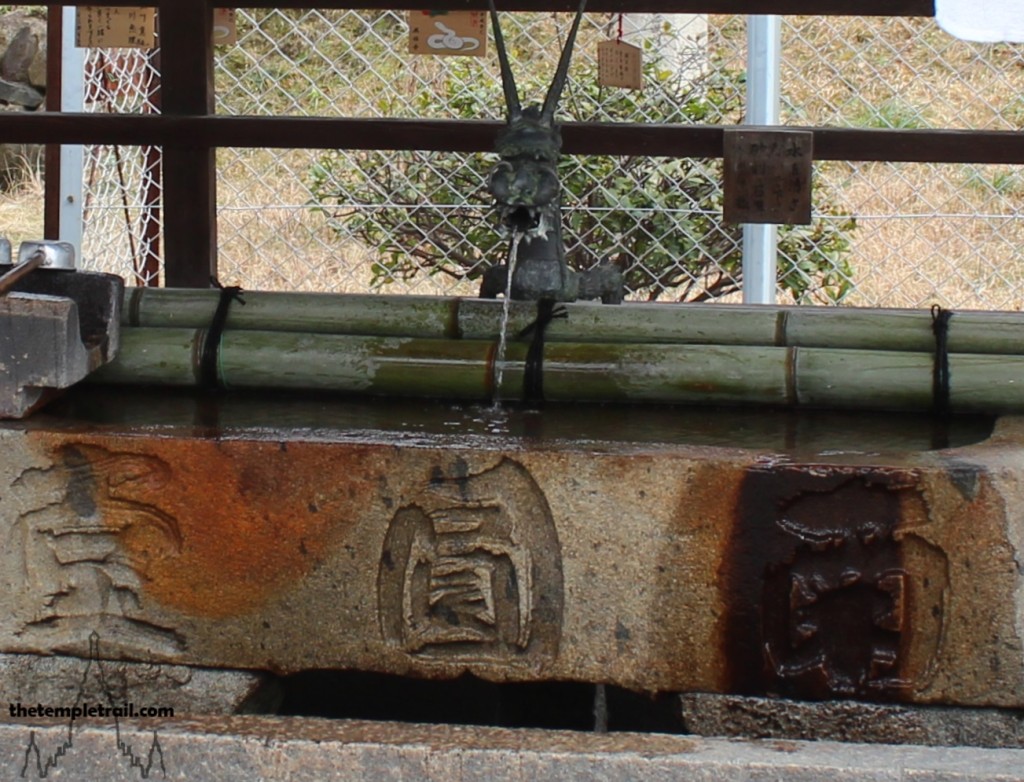
The Fujiwara maintained a tight grip on power by intermarriage with the imperial family. In the last two centuries of the Heian period (794 -1185), they often made emperors abdicate when they came of age to rule, so that a child would take the throne and the regency of the Fujiwara would continue to govern. Their loss of power came from the establishment of the Kamakura Shogunate (1185 – 1333 AD), the feudal government, by Minamoto no Yoritomo, the first shogun of Japan, in 1192. It remained the protector of Yamato Prefecture through the Kamakura Shogunate. Destroyed by fire and war, the temple was rebuilt each time. Over time, some buildings were not reconstructed, leaving the temple as it is today, missing a few key structures.
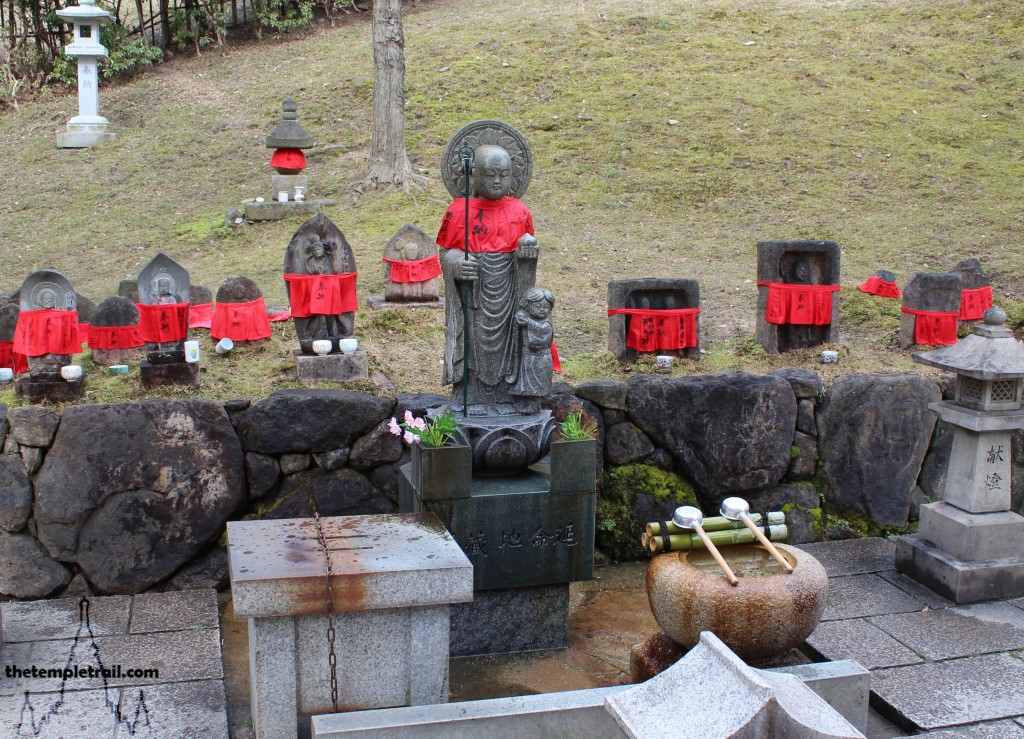
Approaching the temple, you first pass a small cluster of red-bibbed statues and a larger statue of Jizō Bosatsu (Kṣitigarbha). The smaller stones you see are varied. Some have the bodhisattva, some have a pair of figures. These stones are called dōsojin (road ancestor kami) and come from the Shinto religion. These stones are guardians of the road and they protect pilgrims and people in transitional stages. The couples depicted on some are Jō-to-Uba (a happy old couple), the kami (deities) of marriage and fertility. This is clearly a crossroads in life, but so is the one that is overseen by Jizō Bosatsu. In Chinese Buddhism, Dìzàng (Kṣitigarbha) is the bodhisattva of hell beings and protector of the dead. He has particular responsibility for children. In Japan, he also has a function as a protector of pregnant women, aborted foetuses and pilgrims or travellers. In this respect, he has become intertwined with the dōsojin. The idea of death being a transitional crossroads is not unusual globally and his dual function makes perfect sense here. As a pilgrim on the roadside, you feel his protection and that of the kami. The red bibs that adorn the statues are placed by families to honour their deceased. Looking at the statue, hope that all of your transitions in life are smooth and continue on your travels.
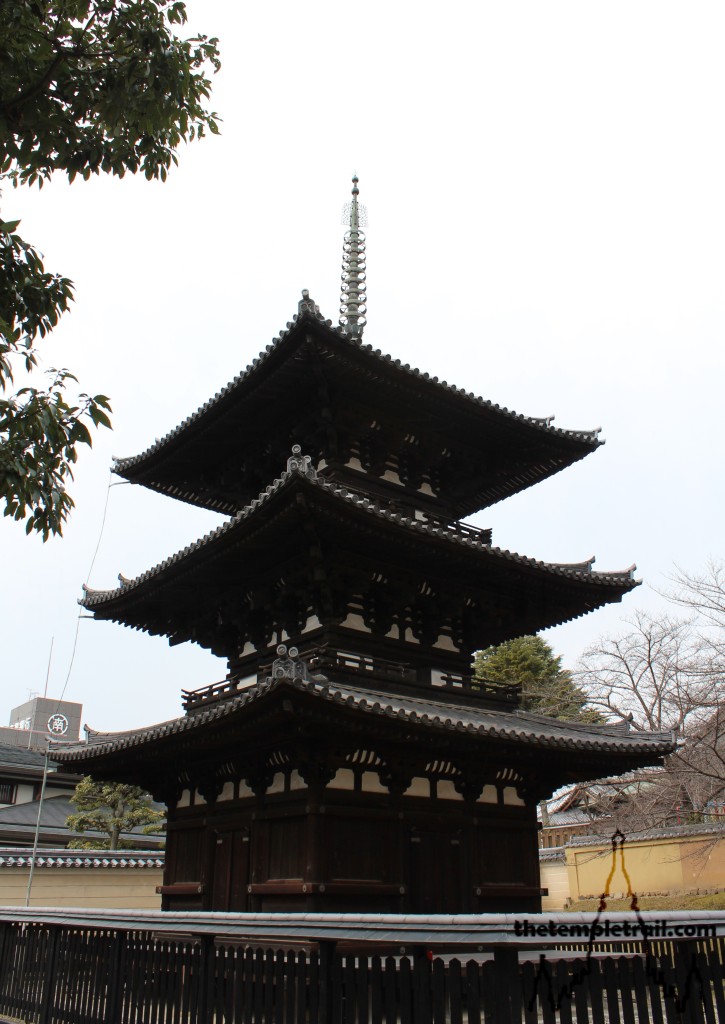
Passing the tree line that screens much of the temple from view, you suddenly encounter a three-storey pagoda, originally built in 1143. Considered a crowning example of 12th century pagoda architecture, the sanjū-no-tō (three-storey pagoda) is the oldest extant structure of Kōfuku-ji. According to the Tale of Heike (a Japanese epic about the power struggle between the Taira Clan and Minamoto Clan), the monks of Kōfuku-ji killed 60 Taira emissaries. This led to the burning of the temple along with a much of Nara in 1180. The Genpei War between the clans ended in 1185 with the victory of the Minamoto Clan over the Taira. As the Fujiwara were allied to the Minamoto, the temple was rebuilt and the sanjū-no-tō dates from this rebuild during the early part of the Kamakura Shogunate. The doors of the well-made square pagoda are closed, but as you circumnavigate it, you imagine that you are walking past the four paintings at each cardinal point that are concealed behind the doors. The paintings depict a thousand emanations of four Buddhas; Shaka (Śakyamuni), Amida (Amitābha, the Infinite Light Buddha), Yakushi (Bhaiṣajyaguru, the Medicine Buddha) and Miroku (Maitreya, the Future Buddha).
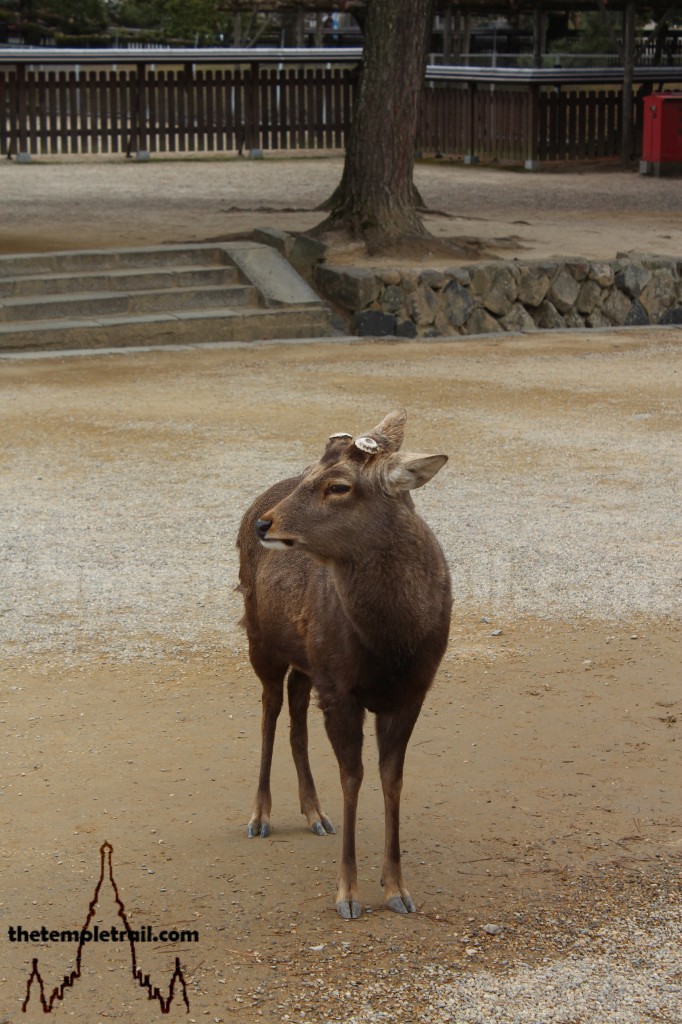
Facing the compound, you sight your first Sika deer. The fearless creatures are protected and have safely lived alongside humans as protectors of Nara for hundreds of years. The legend of nearby Kasuga Taisha, a Shinto shrine of the Fujiwara Clan, states that the kami Takemikazuchi (Thunder God) arrived in Nara on a white deer. Since then, the deer have been revered. The deer approach you and bow. After realizing that you do not have any shika-sembei (deer crackers) to offer them, they move off to find another potential feeder.
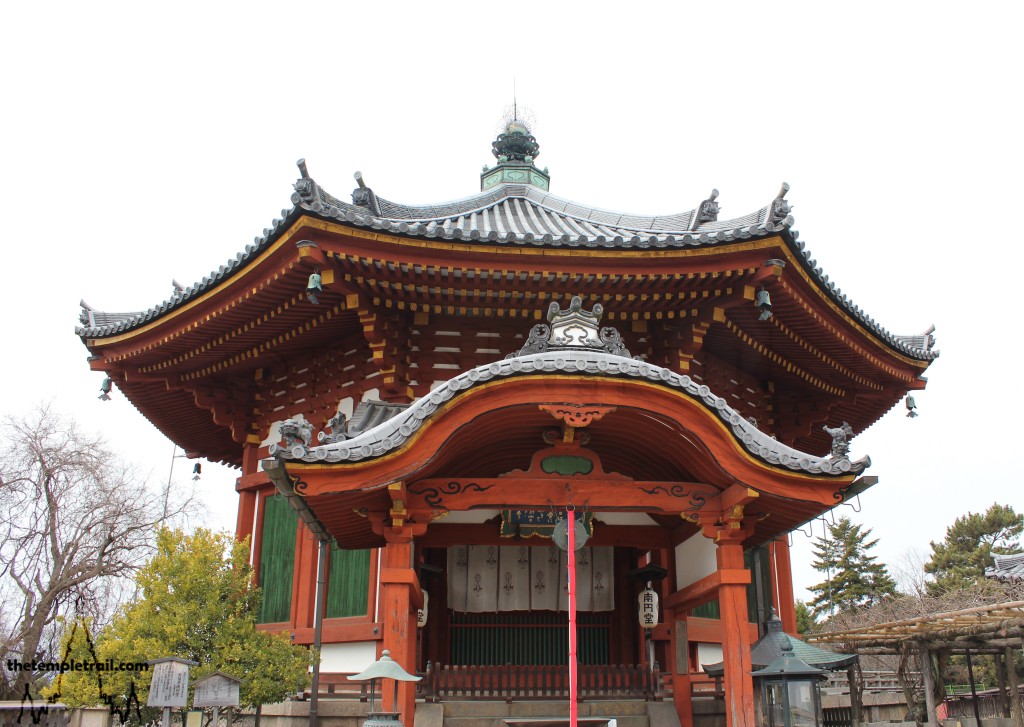
As you take stock of the buildings, you turn to your left and head slightly north to view an octagonal structure that is much brighter than the dark wooden buildings that dominate the temple. The Nan’en-dō (South Octagonal Hall) is an important building and is part of the Saigoku Kannon Pilgrimage, a 33 temple pilgrimage through the Kansai region of Japan. In front of the building is an ishidōrō (stone lantern). These are often placed around temples and are used to contain a sacred flame representative of the Buddha. The octagonal structure that commands your attention is a reconstruction of the original, built in 813 AD by Fujiwara-no-Fuyutsugu, from 1789. Looking to the top of the hall, you see a flaming Hōju (Cintāmaṇi – wish fulfilling jewel) at the peak. From the graceful porch, hangs a rope to bang a gong and stepping up, you wish you could see inside. Unfortunately for you, the hall is opened to the public only once a year on October 17th. The treasures contained within are more mysterious for their concealment. The main statue, created by the famed sculptor Kōkei, is the reason for the pilgrimage as it is of Fukūkenjaku Kannon. This form of Kannon (Guānyīn), the Bodhisattva of Mercy is the Never-Empty Rope Kannon, an esoteric representation that catches stray souls with a lasso. The hall also has statues of the Shitennō (Four Heavenly Kings) and the six patriarchs of the Hossō-shū (Dharma Characteristics School).
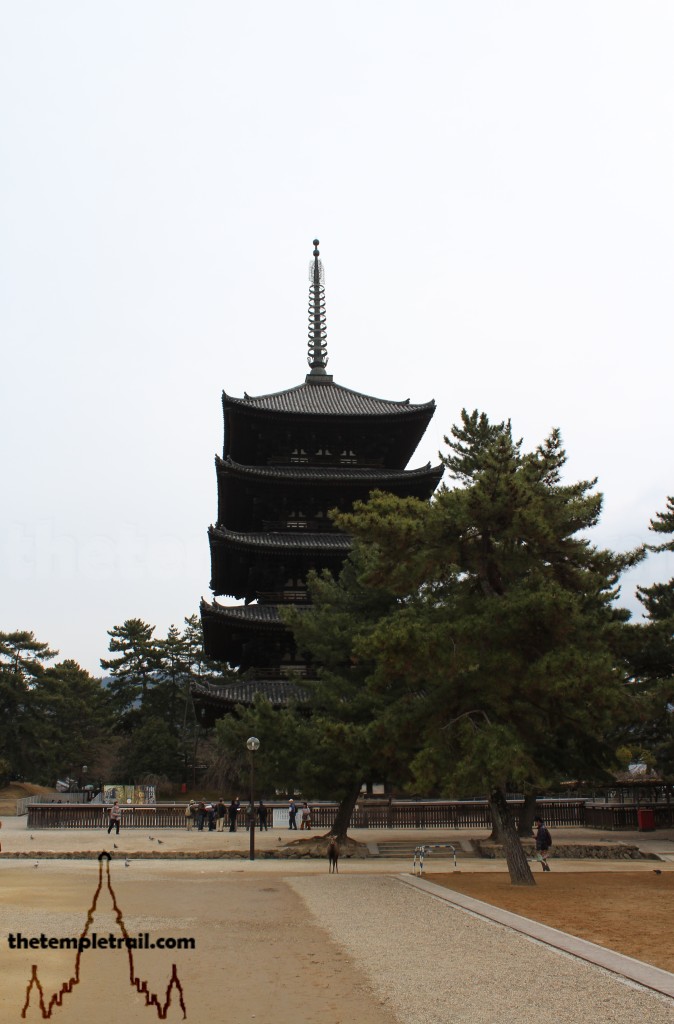
The Hossō sect are the Japanese branch of East Asian Yogācāra Buddhism. They are a Consciousness Only school that has diminished over time, almost dying out in China and Korea. The famed Chinese monk Xuánzàng, who brought Buddhist teachings back to White Horse Temple in China, is seen as the founder of the school. His Chéng Wéishì Lùn (Discourse on the Perfection of Consciousness-only) is a key work for the sect. The Hossō sect are headquartered here at Kōfuku-ji, but they once had many temples, but internal money problems split many away from the sect. When tourism began in the 19th century, many temple owners did not want to pay a percentage of their profits to the Hossō organization, so they began to break away. Today, they have only Kōfuku-ji and Yakushi-ji (also in Nara).
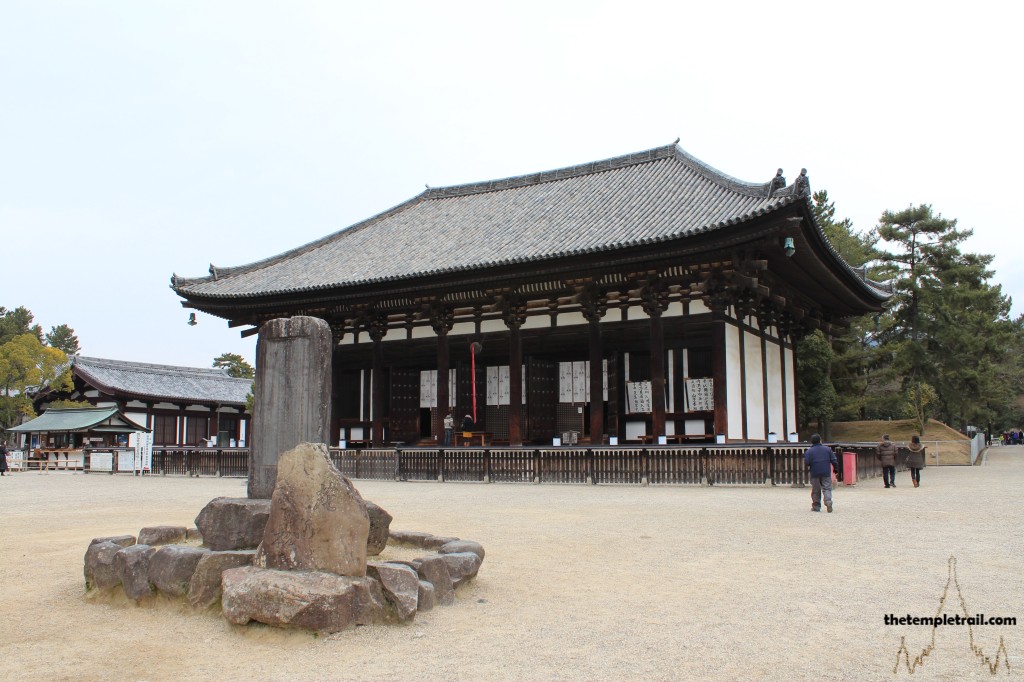
Moving north again, you walk past where the Saikon-dō (Western Golden Hall) once stood. The temple originally had three Holden Halls, but this one was never rebuilt. You end up at the wooden gate of the closed Hoku’en-dō (North Octagonal Hall). The hall was originally built in 721 AD, the current structure was reconstructed in 1210. The hall contains a statue of Miroku (Maitreya), the Four Heavenly Kings and two rakan (arhats). The two are half-brothers from India called Muchaku (Asaṅga) and Seshin (Vasubandhu) and they are the 4th century AD founders of the Indian Yogācāra School. Turning around, you also pass a covered building. This is the work in progress to restore the Chūkon-dō (Central Golden Hall). The 1811 restoration suffered bad rain damage and is in the middle of a lengthy repair project.
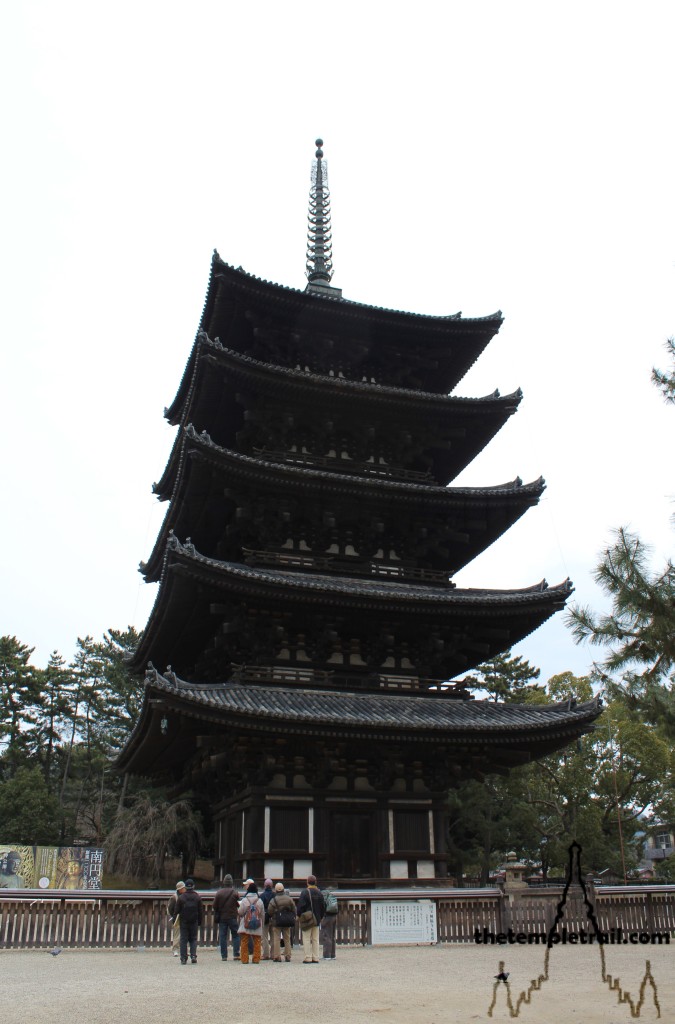
Back at the front of the temple, you walk past the spots that were once occupied by the Nandai-mon (Great Southern Gate) and chū-mon (entrance gate). These, along with the kairō (cloister), were not reconstructed after the fires of war destroyed them. Before you now stands the immense gojū-no-tō (five-storey pagoda). At over 50 metres tall, it is second only in height to the pagoda at Tō-ji in Kyoto, in all of Japan. Originally built in 725 AD by Empress Komyo, the iconic structure you see before you today dates from 1426. Like its three storeyed counterpart, the pagoda enshrines four Buddhas. Rather than being thousands of emanations, the four (Yakushi, Shaka, Amida and Miroku) are in triads with two attending bosatsu (bodhisattvas) each. The square shaped building draws your attention, but it is sealed, so only the outside is visible. The five tiers represent the elements of chi (earth), sui (water), ka (fire), fū (wind), and kū (void). The majestic eaves are completed with a sōrin (bronze ringed finial). Looking up at the classical Japanese pagoda, you feel as if you have stepped into a scene from woodblock print or glazed on a jar. The picturesque building’s transportational qualities enrapture you, but breaking the spell, you make for the only major hall that remains.
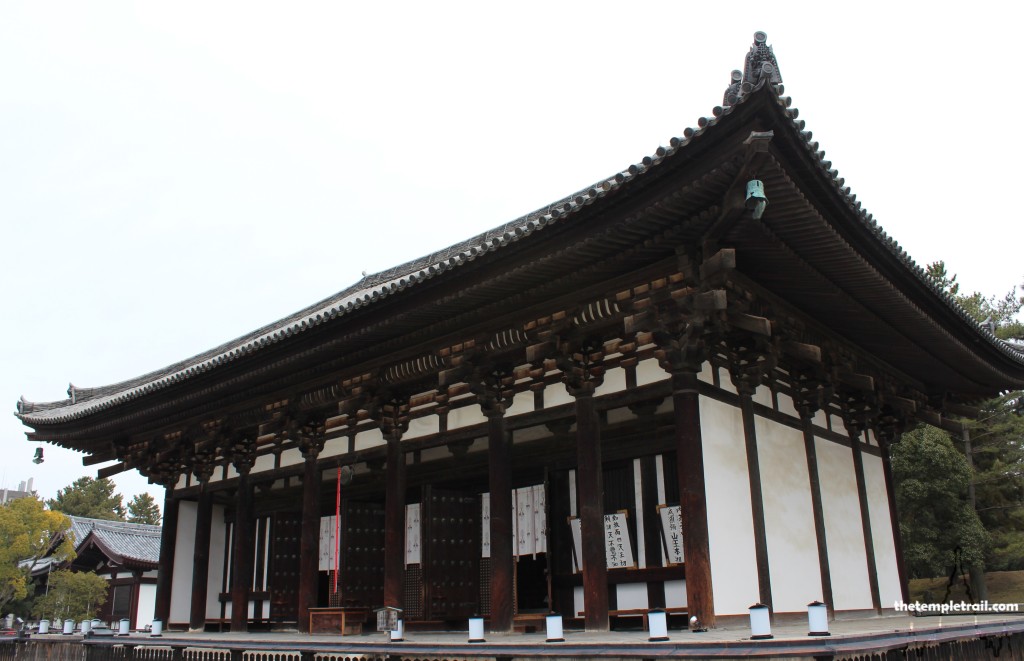
The Tōkon-dō (East Golden Hall) is a dark, but simple structure. The elegant clean lines give little away as to what is contained within. Originally built in 726 AD by Emperor Shōmu, the structure you see today is from 1415. It was built to help the recovery of the Empress Genshō, who had abdicated in favour of her nephew Shōmu. The construction clearly had an impact, as she lived for another 22 years. Stepping up to the doors, you look into the hall. The dark interior surrounds the main focus of the hall, a large gold lacquered statue of Yakushi, the Medicine Buddha, intended to help the ailing empress. The Buddha is haloed by a golden mandala. Around the Buddha are smaller statues of the Shitennō. These Four Heavenly Kings are accompanied by the Jūni Shinshō (Twelve Heavenly Generals). The Jūni Shinshō are the guardians of Yakushi and are Yakṣa (ogres). They have fierce expressions and spiked hair and represent the twelve vows of Yakushi. Looking at the faces imbued with anger at evil deeds, you can see how these warriors fight sickness and command the 84,000 pores of the skin. These small statues guard the entire dais, not only Yakushi. Next to the Buddha’s left knee is Monju (Mañjuśrī), the bosatsu of wisdom, on the opposite side is Yuima Koji (Vimalakīrti). Vimalakīrti was a wealthy lay practitioner and patron of Gautama Siddhartha (the Historical Buddha), according to Mahāyāna tradition. His inclusion on the altar is highly unusual, as he is not normally venerated in this manner. His discussion of Buddhist doctrine with Mañjuśrī is the basis of the Vimalakīrti Nirdeśa Sūtra. To either side of these two statues, are large golden statues of Nikkō (Suryaprabha, sunlight bodhisattva) and Gakkō (Candraprabha, moonlight bodhisattva). They are the attendants of Yakushi and complete the traditional triad.
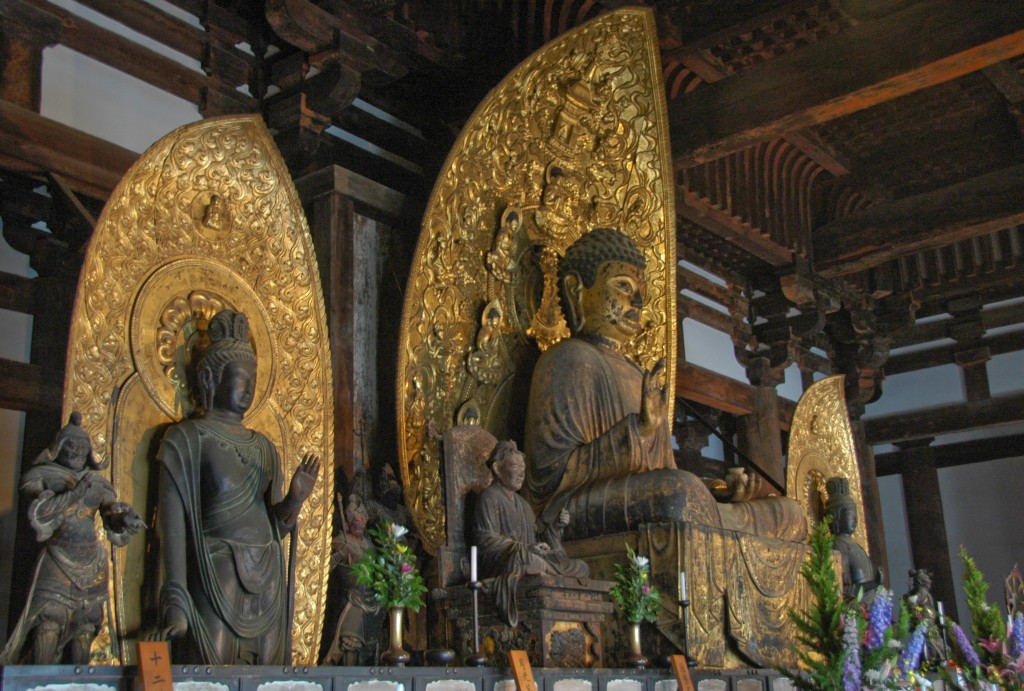
After taking in the healing powers of the chamber, you descend from the hall and back to the main courtyard. Wishing to press on to see the rest of Nara’s cultural wonders, you opt not to visit the Kokuhonkan (museum). While missing out on the famous eighth century statue of an Ashura (Asura or Angry God), one of the Hachi Bushū (Eight Legions) present at Vulture Peak as the Buddha expounded the Flower Sutra, you feel that you must take hold of the day in order to visit Tōdai-ji and Kasuga Taisha. The relics of the hall will have to wait for another time. Passing more deer and the Ōyūya (bath house), you continue on your way through the green parks and past bowing deer. The lingering power of Kōfuku-ji urges you forward to take in more of the profound history of Nara. The temple may not be as powerful as it once was, but its story will live on for generations to come.
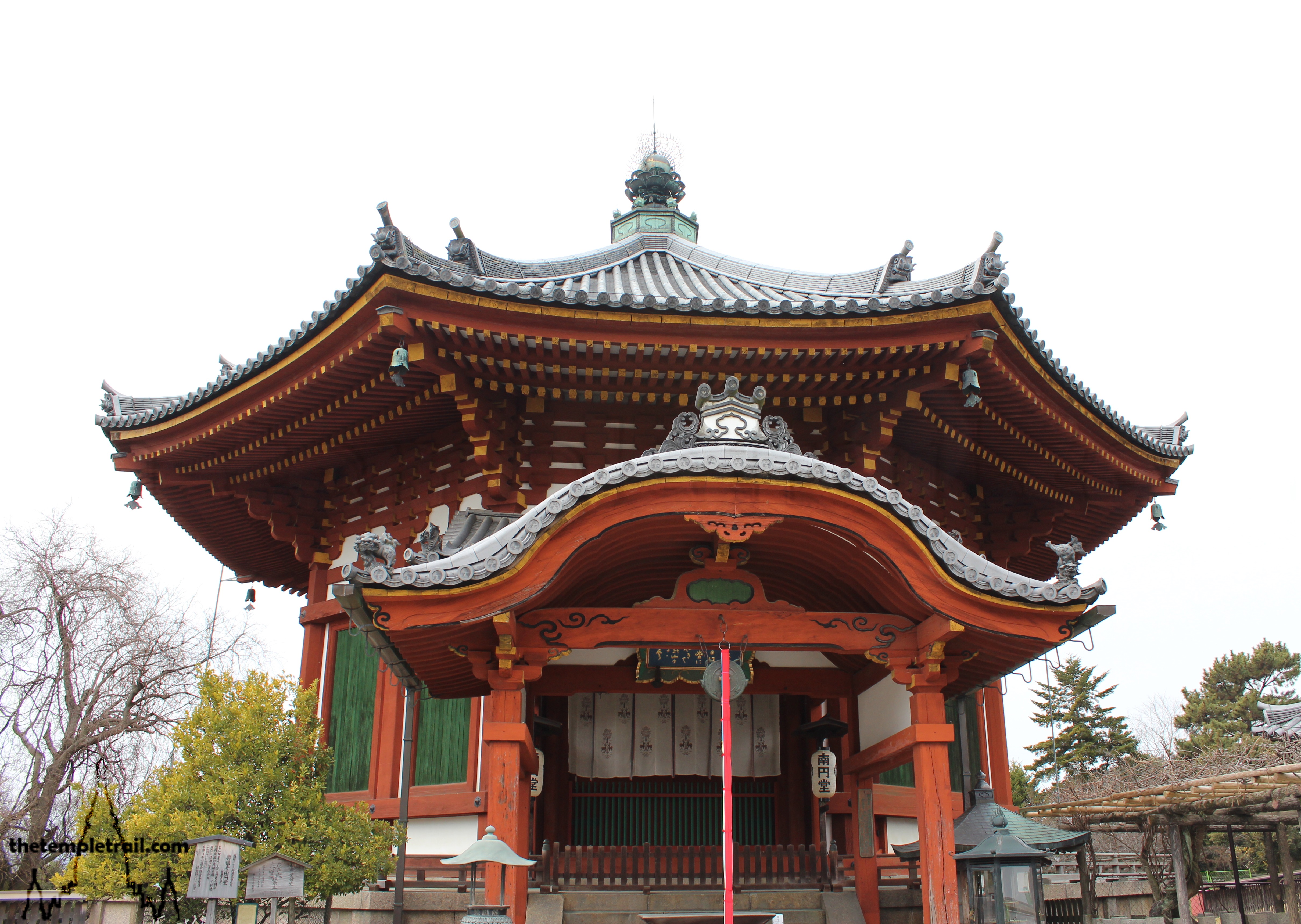
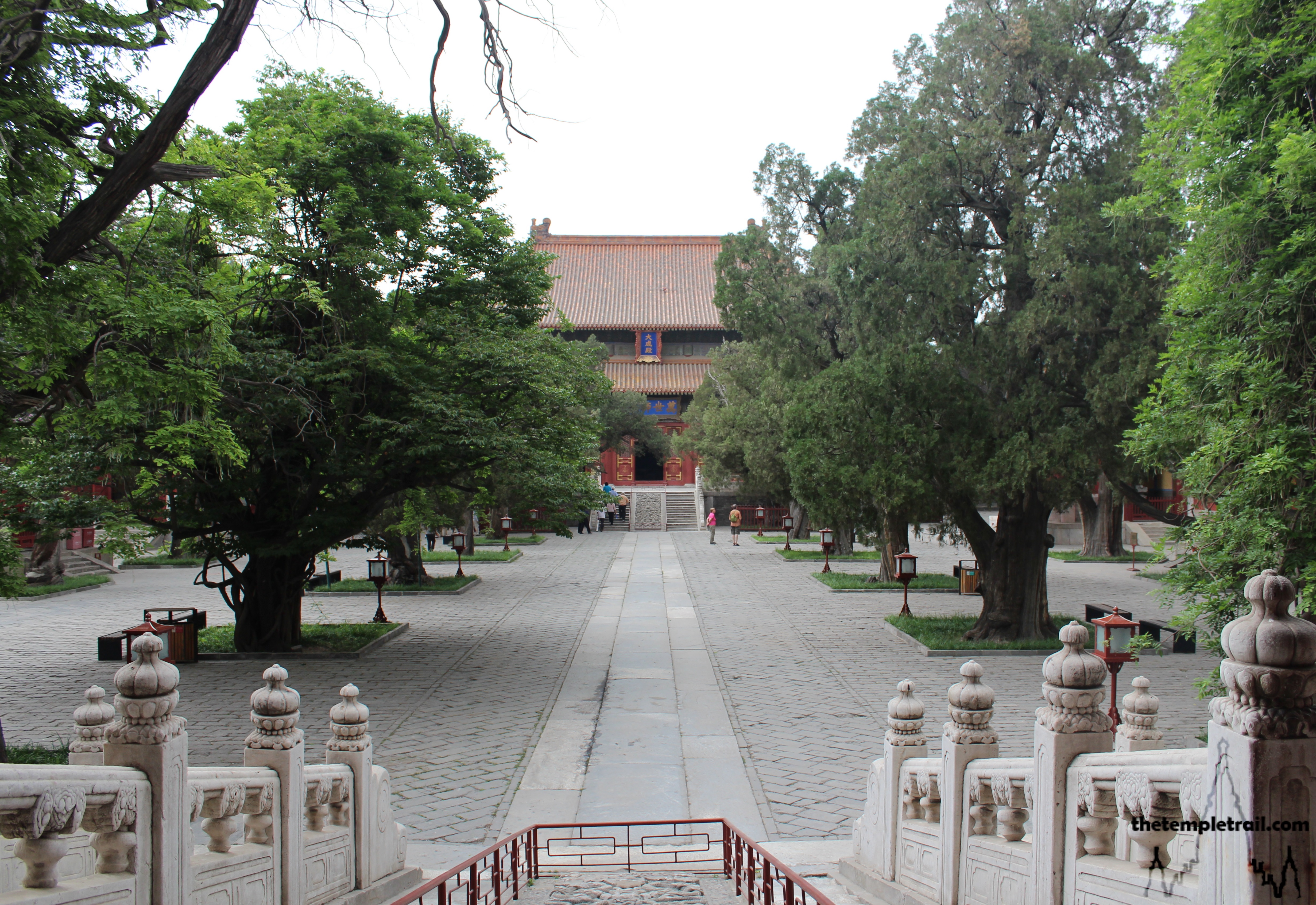 Beijing Confucius Temple
Beijing Confucius Temple